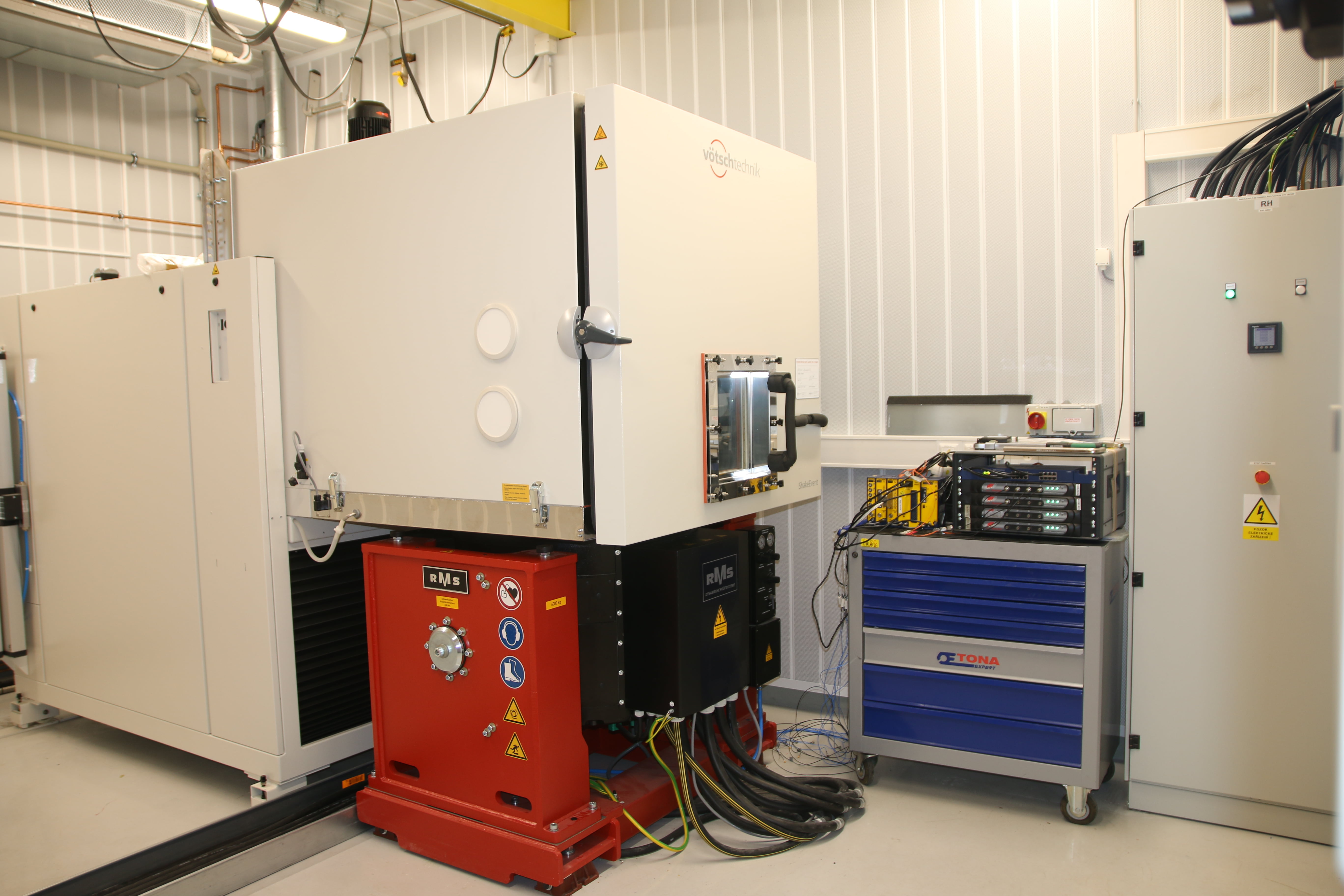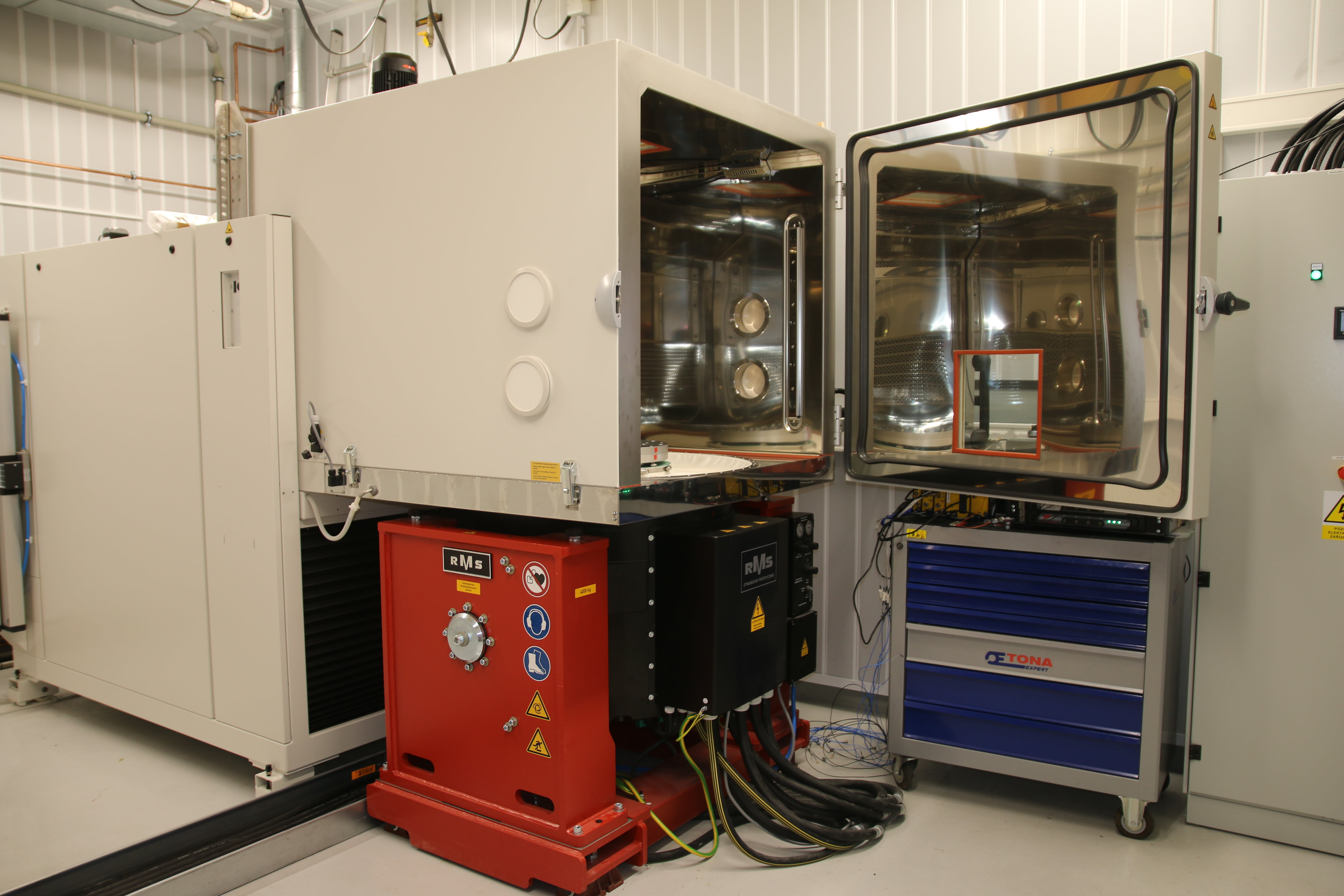
A long-time partner and user of our products, the company Robert Bosch in České Budějovice, approached us with a request to propose a solution for testing printed circuit boards. Specifically, testing the behavior of printed circuit boards during self-resonance, when the entire product can be subjected to critical mechanical stress, which can damage or completely destroy it.

A long-time partner and user of our products, the company Robert Bosch in České Budějovice, approached us with a request to propose a solution for testing printed circuit boards. Specifically, testing the behavior of printed circuit boards during self-resonance, when the entire product can be subjected to critical mechanical stress, which can damage or completely destroy it. How to measure the self-resonance of a product in conditions from -60°C to +200°C with different ambient humidity?
For similar testing, a vibration exciter (RMS brand supplied by LB-acoustics Messgeräte GmbH) with a control unit from Vibration Research is used in combination with a Vötsch climate chamber, which is adapted for joint operation with the vibration exciter. Such a chamber simulates the surrounding climatic conditions. Frost, heat, humidity.
The delivery of a vibration table with a climate chamber is not exceptional. We have many years of experience with such products. However, there was something extra non-standard about this project.

In addition to the usual requirements for testing temperature and climate ranges, vibration ranges, and the possibility of monitoring samples, there was also a requirement to determine the self-resonance of samples. But how to determine the self-resonance if the sample vibrates in an environment from -60°C to +200°C in different humidity and you cannot rely on classic accelerometers? Resonance can change, it does not have to be only at one frequency if the sample is in different temperatures and humidity. So how to do it?
A combination of several technologies was chosen to measure resonance. Sensors placed directly on the printed circuit board, a 1D laser scanning system, and a 3D laser vibrometer system. However, these laser systems cannot be placed inside the climatic vibration chamber. They are not adapted for such use. Therefore, scanning from outside the chamber is necessary. However, this may not be a simple matter.

We fitted a standard Vötsch climatic vibration chamber, model ShakeEvent T/1200/70/15/V, with special square passages (in the door and ceiling) with multi-layered glass windows. We equipped these windows with a special innovative heating system and an air dryer. If the windows were to mist up and freeze, it would not be possible to correctly measure the resonance of samples from outside the climatic chamber.
We successfully implemented the entire solution in a real environment at the Robert Bosch facility in České Budějovice. We are pleased that Robert Bosch can test printed circuit boards in the required and not entirely standard, climatic and mechanical conditions.
You cannot find our entire range of climatic chambers HERE.

Ondřej
Heřmanský
Sales Manager

Ing. Gabriele
Benaglia
Sales Director